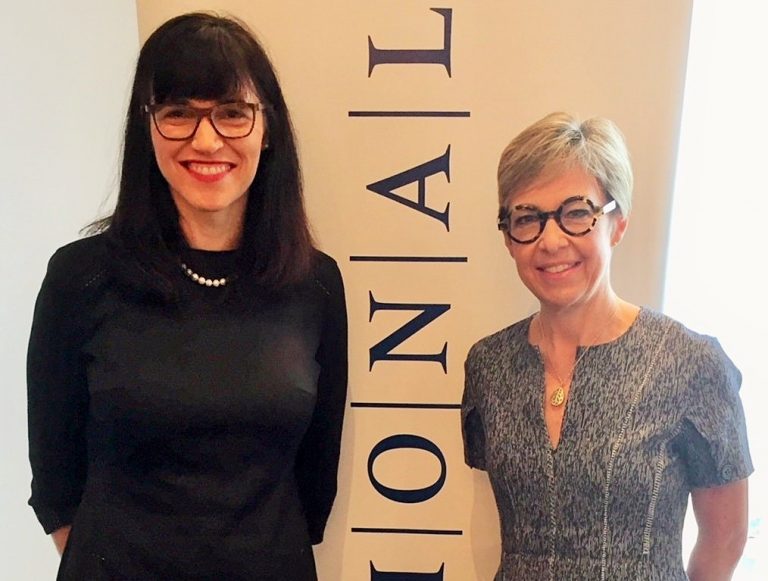
Recommended articles
On related topics
NATIONAL’s Halifax office recently hosted a breakfast event with Brenda Trenowden, Head of Financial Institutions, Europe, ANZ Bank and Global Chair of the 30% Club. The event featured a riveting discussion between Brenda and Sarah Young, the Managing Partner of our Atlantic offices who also leads the Firm’s Talent Working Group, as well as a series of questions from the audience which was comprised of regional business leaders.
On this occasion, NATIONAL also announced that it has joined the 30% Club and will continue to prioritize a mandate of building diversity at the board level and across our organization as a whole.
Please find below an abbreviated version of the conversation between Sarah and Brenda.

SY: For our audience members who are less familiar with the 30% Club, could you please provide an overview of its mission and core areas of focus?
BT: The 30% Club is actually a campaign, a movement designed to create diversity in organizations. The 30% Club launched as a campaign in the UK in 2010 with a goal of achieving a minimum of 30% women on FTSE-100 boards. This number in the UK sits at 27.9%, here in Canada it’s 18.5% which is on par with Malaysia (19.1%) and South Africa (17.1%). We don’t support quotas, we are looking to influence Chairs and CEOs to set their own targets in their businesses and to generate the critical recognition that better gender balance leads to better results in business.
SY: There’s been a lot of research into the business benefits of gender diversity. What global trends are you seeing?
BT: Gender diversity is vital to any workplace. This diversity offers different viewpoints, different working styles, more ideas, a wide range of market insights and will ultimately lead to better performance and bottom line results. Second to that, a gender diverse workplace serves as a mirror for its customer base. Successful companies need to attract and retain successful women in order to be competitive globally.
SY: You work extensively with a UK investor group to share ideas. What more can you tell us about that?
BT: A lot is changing in the workplace but we still have a long way to go. A few things we’ve shared as observations is the contrast in behaviour between men and women. For example, men are more inclined to take ownership for success whereas women will emphasize a team dynamic, a team win. So the exceptional capability of a woman may be lost in that conversation.
There is also an interesting statistic that women are only inclined to apply for a role if they are 90% confident they have the relevant experience, whereas men will apply for a role if they are 60% confident they have the right background. There is a lot to be said for women to be self-advocating and not holding back.
SY: I know that you have been hosting a series of breakfasts with CEOs of some of the UK’s largest listed companies over the last few months. What themes have been coming out of those?
BT: CEOs are interested in sitting down and having these conversations. There is no one ‘magic bullet’ in terms of what needs to be done; it’s a long game but in general, these executives are open to change and want to figure out how to access and groom the right talent.
To me, this is about sponsors. And there’s an important distinction between mentors and sponsors. Obviously mentorship is paramount but further to that, at a mid-senior level, employees, often women, need sponsors who will advocate for them as they progress through their careers and seek leadership roles, board positions, etc. My advice for any woman would be to identify these sponsors and continue to foster these relationships and pointedly ask for the advocacy.
SY: In terms of global trends, what is having most impact and what are the actionable recommendations that companies should be looking to implement?
BT: Certainly we are seeing the need for an agile workplace. I prefer that word vs flexible. Agile encompasses greater meaning – and really does speak to the need for organizations to react and work with employees to balance their personal and professional life needs. As an example, one of my team members at my previous bank was working very long days, was resentful that he wasn’t seeing enough of his children, and was becoming numb in the process. My suggestion was that he work from home one day a week so he could take his daughters to school, have some truly quality time with them and still address his work needs. This was a breakthrough for him and completely changed his outlook on his job. He subsequently became the top performer in my team. A simple thing but it’s an example of how we must be agile, with both personal fulfilment and productivity in mind.
We are also seeing the shift in maternity/paternity leave. Fathers are choosing to share parental leave with their wives, offering a chance to bond and be part of this important family experience. It’s becoming an important trend in the UK and we are seeing more of this in North America as well.
SY: Thank you. It’s inspiring to know what’s on the horizon and we are pleased to be part of this important conversation.
You can follow Brenda on Twitter:
Find out more about the 30% Club, and explore the Canadian Gender and Good Governance Alliance Directors’ Playbook.
——— Sarah Young is a former Partner and Senior Counsel at NATIONAL Public Relations
